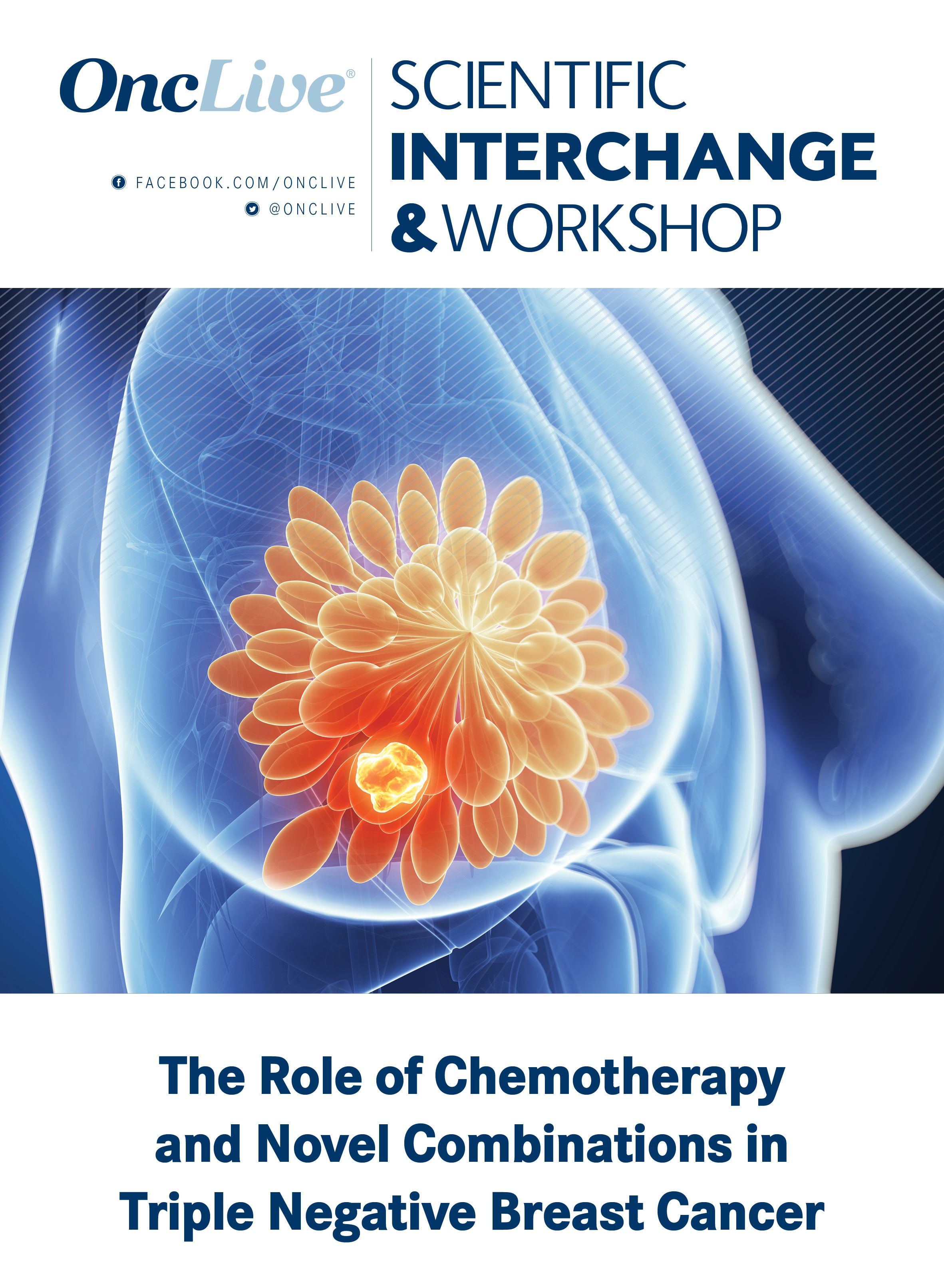Stakeholder Perspectives on the Rapidly Advancing Chemotherapy Landscapes for Triple-Negative Breast Cancer
In the metastatic breast cancer sphere, 2 chemotherapy agents have come to the forefront: capecitabine, for metastatic breast cancer, and eribulin, for triple-negative breast cancer.
John Crown, MD, MBA

In the metastatic breast cancer sphere, 2 chemotherapy agents have come to the forefront: capecitabine, for metastatic breast cancer, and eribulin, for triple-negative breast cancer (TNBC). Each agent has shown improvement in overall survival rates compared with standard chemotherapy for heavily pretreated patients with metastatic disease. Recent phase 3 trials have explored the potential of these agents in TNBC in particular. Ahead, John Crown, MD, MBA, professor and consultant of medical oncology at St. Vincent’s Private Hospital in Dublin, Ireland, discusses these and other strides made on the evolving TNBC treatment front.
OncLive®: What is chemotherapy’s current role in the triple-negative space?
Crown: One thing we’ve learned in recent years is [that] the old blanket designation of TNBC as chemotherapy-insensitive cancer is not correct. At this point in time, despite the disease’s reputation for chemotherapy insensitivity, chemotherapy still is the cornerstone of treatment for TNBC. Even in situations where we’re looking at immunotherapy drugs, most of the evidence would suggest they will be given together with chemotherapy.
How would you situate eribulin in the current treatment landscape for TNBC?
In a very early study, the EMBRACE trial [NCT00388726], eribulin was compared [with] treatment of physician’s choice in [an] extraordinary, heavily pretreated group of patients. It produced the survival benefit, something [that] is often not seen in metastatic breast cancer trials. The drug was then studied in earlier stages of disease, in a randomized comparative trial versus capecitabine. The trial overall was negative, but it included a large number of patients with HER2-positive disease who, if the trial were being designed again, would be excluded. Among the HER2-negative population, there proved to be a benefit; for the group of patients with TNBC, there was a substantial benefit. As a result, there has been great interest in this drug in this setting.
Most doctors, when treating patients with metastatic breast cancer—triple negative or other types—have in the back of their mind a list of drugs that we flick through and should give any patient with this dreaded diagnosis. The opportunity can be treated with all the drugs on this list as a default, with the exception that some people will elect not to take later lines of treatment. Some patients may be too weak, but in general, for a patient who can tolerate treatment, there are a number of drugs on that list. For most of us, eribulin features prominently on it.
In my case, I have the tendency to mentally elevate that drug toward the top of the list for patients with triple-negative disease. When you recognize that many patients you see with TNBC will have anthracycline taxane therapy as part of their neoadjuvant or adjuvant approach, then eribulin is high up the list.
In addition, in a number of studies comparing it [with other] approaches, eribulin comes out well in terms of things like quality of life, symptom control, etc. So, for patients who have advanced disease, whose primary end point is, sadly, palliative, it’s important not to hurt them with treatment if one can. Having treatments [that] are gentler while retaining activity [is] useful. This also makes them attractive targets for combination therapies of various kinds. We tend to look at combination therapies, acknowledging that one combines anticancer treatments together so that you hope to get a better benefit, but we have a risk of higher toxicity. Eribulin can cause problems—neuropathy, cytopenia, etc—but it may be a bit easier to compare [with] drugs that are reasonably tolerated than some of the more aggressive drugs.
In particular, the case of immunotherapy would have a bit of interest in looking at it as a companion drug in the setting. The ENHANCE-1 trial [NCT02513472], presented at [the American Society of Clinical Oncology 2020 Virtual Meeting], is a nonrandomized, single-arm study evaluating pembrolizumab in combination with eribulin in a cohort of patients with metastatic TNBC, including those who have received 2 prior lines of chemotherapy. There was substantial activity and survival described in this nonrandom assignment study, and we will, hopefully, see the state of these data further elaborated on.
We’ve also done research in our lab looking at a combination of eribulin with several p53 agents. These are drugs [that] have the effective restoring activity, mutant p53, and we’ve seen some very good synergy data between eribulin and several of these drugs. We hope to have a clinical trial up and running in the future, looking at patients with advanced TNBC.
What are your thoughts on priming a patient’s immune system via chemotherapy?
In some ways, conceptually, it would be easy to make the generalization that chemotherapy and immunotherapy drugs might have somewhat antagonistic effects, in the sense that we know that chemotherapy can cause cytopenias, including leukopenia, and could in some cases have an immunosuppressive effect. However, it may be a little more complicated than that. Chemotherapy may prime cancers for immunotherapy attack by causing brief cytotoxicity and release of antigens, which might make them more visible to the immune system.
In addition, they sometimes have effects on angiogenesis, which might enhance oxygenation of some tumors and antitumor activity. Some of the effects of chemotherapy on the immune system itself can be subtle. It’s not all immune suppression. Some components of the immune system are immunosuppressant, like regulatory T cells. It may be that some agents, by modulating their expression, can enhance immune expression. It’s clinically compelling that several studies blazed the trail for the new immune checkpoint inhibitors in various diseases, including the original ipilimumab study where it was compared with [dacarbazine] chemotherapy versus chemo alone; that study was positive. The old blanket idea of chemotherapy as relentlessly antagonistic is probably not correct.




